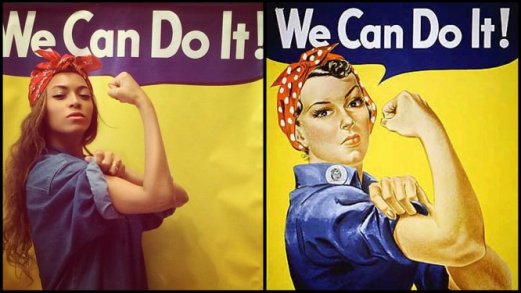This video is a little out of date but most of the data is still relevant. Enjoy!
Furman’s campus food: The Dining Hall
One of the major adjustments to college is new-found freedom with food. Suddenly, students have the ability to truly form their own eating habits independent of other people. They have their own schedules and their own preferences. The choices that a student makes with this freedom can have a great impact on their personal health as well as on the food system, by affecting options and availability.
The Furman Dining Hall, or the DH as we call it, has many food options for it’s students.
Most students are unaware of what Furman Dining does when it comes to understanding and supporting food systems. Furman Dining strives for local and seasonal food and also monitors student eating habits intensely to reduce food waste.
Locavore Movement
Some stations have the Certified South Carolina logo, stating that some or all of the ingredients used at the station are local. Local food helps support local economies and reduce the miles that food has to travel from farm to plate. The “Locavore Movement” has seen a rise in interest in the past couple of years, especially among younger generations.
Student Film Project College Winner – Gardening for Good from GLP Films on Vimeo.
Monitoring Food Consumption
Furman Dining Services also monitors student eating habits. The DH measures what recipes are popular and how much food is needed to sate students. For example, the staff will record how much chicken goes out into the “floor” stations for lunch then at the end of the shift monitor how much chicken is left over. This might seem like an irrelevant detail but it actually is a great step in the right direction. Food waste is a major issue, particularly in the US where food production is so heavily subsidized. When food demand is monitored on the front end it reduces waste on the back end.
Although these are two very specific examples of how Furman Dining is reducing its environmental impact through smart food system choices, it is not alone. Food movements are popping up on higher education campuses all over the globe. There is a growing trend of on-campus teaching gardens.
Serious conversations about the state of our current food system are taking place. Higher education, especially small liberal arts colleges, are great facilitators for these conversations because they provide vital examples of the impact smart food planning can have on a complicated system.
The Subtle Things with Aesthetics
In any creative endeavor there are usually multiple layers of meaning or at least multiple approaches to understanding the content.
The same is true for content creators, especially for a medium as diverse and exciting as the Internet. Everything can elicit reactions or can suggest a certain meaning, whether you as a blogger want it there or not. Even the typeface you use can send messages about your intent and credibility.
For example:
(Comic sans just shouldn’t exist. I’m glad this print does though.)
On a more serious note, one of the readings discussed how images are interpreted and how meaning is changed by viewers. The reading elaborated on various theories of how ideology is informed by media. Some of the theories were downright depressing. According to Marx the bourgeoisie control everyone else’s minds in addition to controlling all of the wealth. According to Althusser individual human beings are ever-ready moldable subjects that are just waiting to be used by media, so the messages behind media can be streamlined for content creators to find their ideal audience. If you build it they will come.
I personally thought Gramsci’s hegemony theory to be more plausible. It allowed for variations in time that affect media interpretation and allowed for counter culture. It seemed to be the only theory that treated people like people and acknowledged that their personal experience influences how media is interpreted.
How does this make you feel? What does the Beyoncé version make you think of?
The one thing that all of the theories agreed on was that there is always some layer of subtlety to visual images, some layer of meaning. This meaning can be intentional, like the way a certain phrase is paired with a previously neutral image, or it can be completely unexpected as a result of the viewer’s interpretation.
“Everything’s got a moral, if only you can find it.” – Lewis Carroll

Exploring Food Systems at Furman University
This blog will look at food systems – food’s entire lifecycle from farm to plate to trash – and the environmental impact that these complex systems can have. It will also look deeper into what Furman University’s Dining Hall is doing to help reduce its food impact.
No matter where you come from food is probably an important part of your cultural identity. The food you have when you visit a new place will unavoidably determine your view of the place itself. And the food you bring to a new place helps add some flavor to the mix.
But despite our intimate knowledge of food we really don’t know that much about it. Every Tuesday in Furman’s Dining Hall is Chicken Finger Tuesday. The Dining Hall doesn’t advertise who their food partners are so we students don’t know much other than how it tastes. We are not told where that chicken came from or how it was raised, processed, packaged or distributed.
Hopefully, this blog project will give Furman students the information we need to change our food system for the better.
Feature Photo of Fall harvest vegetables courtesy of Traveler’s Rest Farmer’s Market.
“An exciting time for Journalism”
Is it really that simple?
On the side of the LA 65 North highway there is a billboard that advertises an iPad app that specializes in “TV for me”. TV that only shows content and advertisements targeted to specific demographics like age and race and gender. And TV that costs more than regular cable or Netflix.
I don’t know what to think after reading Brian Carroll’s report on journalism’s current transition from print to web. It’s inspiring that more people are able to discuss news and actively participate in content creation. However, I fear the potential results of something that Carroll only touched on lightly. In the beginning of the chapter there was a brief observation that modern news stories are moving away from the traditional “push media” format – where general information of pertinent events is distributed to a large heterogeneous audience – to a “pull media” format where the unashamedly biased content that is produced pulls interested parties in.
The chapter only discussed the positive impacts of this shift. While I agree that it can be positive that hyper-engaged niche communities are developing around interesting content, I wouldn’t go so far as to say that it is amazing or revolutionizing media for the better.
My problem with this, and with the “TV for me” app is that it encourages an “I’m one of the crowd” mentality. But it’s rarely the crowd of the global community. It’s the crowd of like-minded people typically deaf to other people’s perspectives.
This is a bit of a slippery slope but who’s to say that this shift of news from print sources to more socially-connected ones with active members won’t lead to extremist group-selective news? Greenville, South Carolina has seen a major increase in Ku Klux Klan membership over the summer. During the first week of classes here at Furman University a burning cross was found on campus. In this case, maybe more socially-connected media has contributed to a larger, more active audience for the worst?
Media should be, well, a medium, for inciting change and progress in a community. I believe that the only way for that to truly happen is for the majority of the moderate (a majority, I might add, that is fed up with extremist non-compromising shouting matches) to hear what’s going on. I doubt those individuals will stay too long on blogs that make them feel unwelcome for their diverging viewpoints.
PS- Here’s a comic that probably says what I’m trying to say better.


